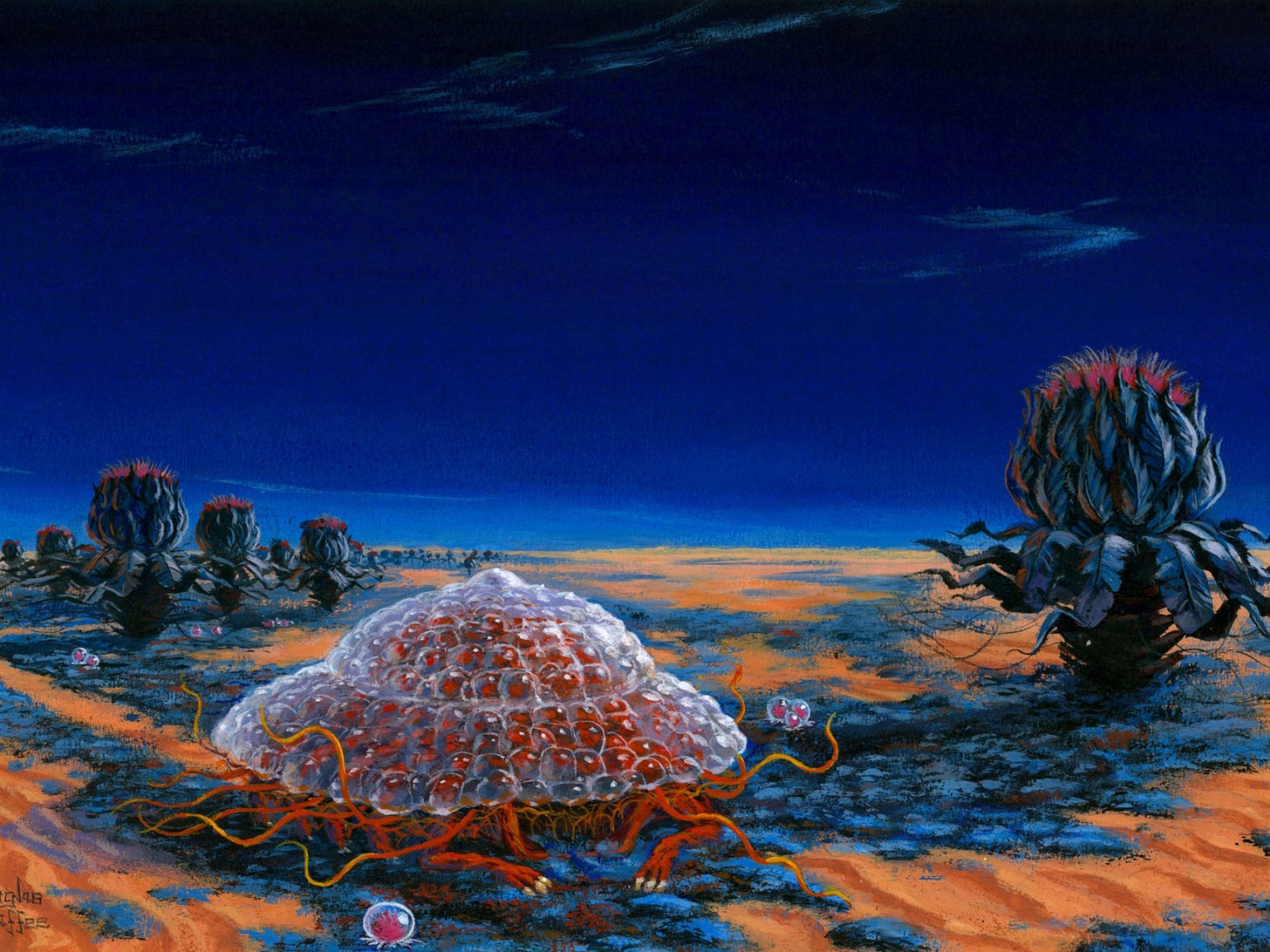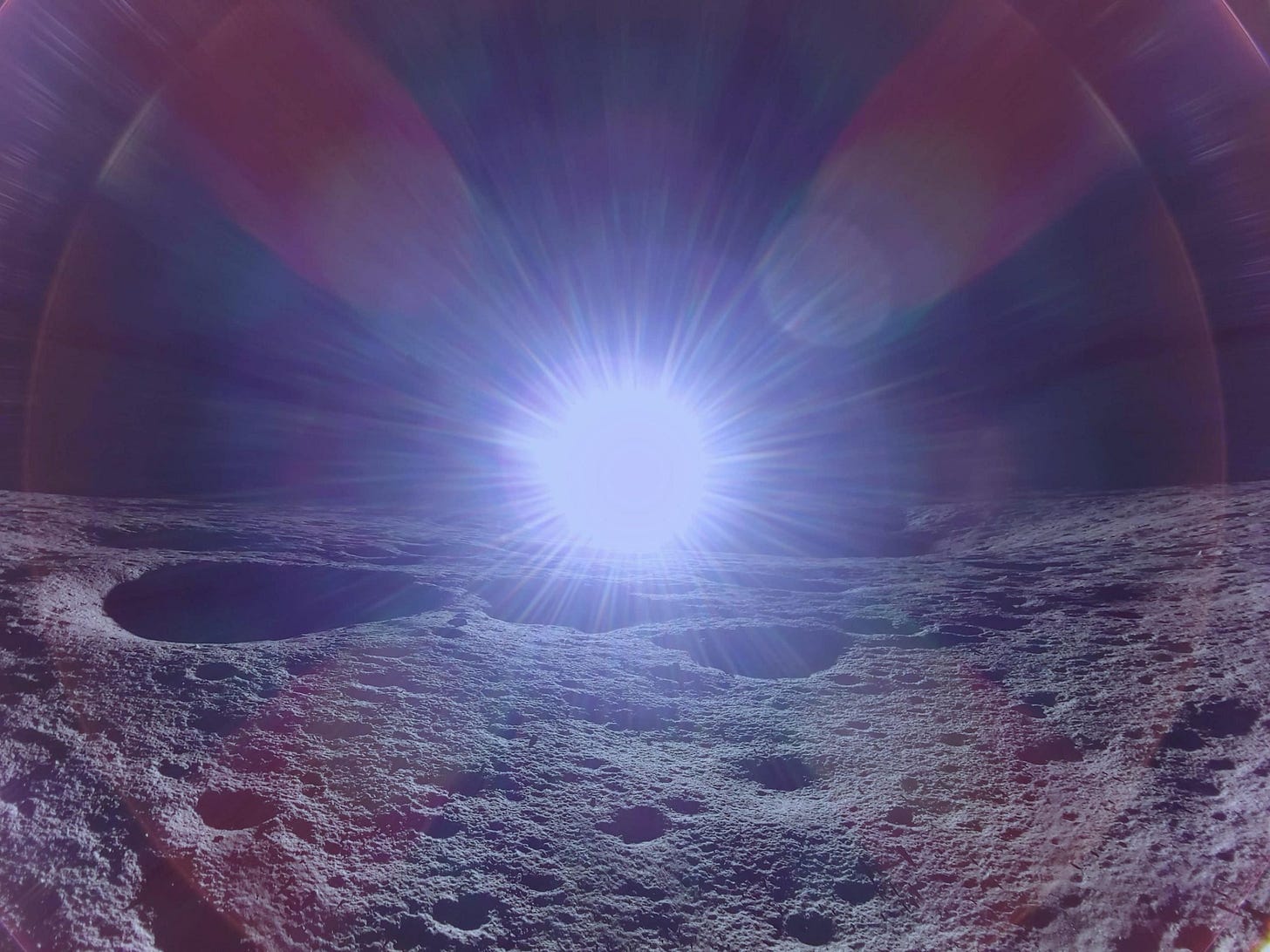When We Land on Mars
On space and symbolism
Welcome to this update from New World Same Humans, a newsletter on trends, technology, and society by David Mattin.
If you’re reading this and haven’t yet subscribed, join 28,000+ curious souls on a journey to build a better future 🚀🔮
Last week, two objects that we made — I mean, we humans — landed on the Moon.
A US space startup, Firefly Aerospace, saw its Blue Ghost lander touch down in the Sea of Crises, a vast lunar basin visible from Earth. It will spend the next few weeks drilling into the surface and sampling extracts of rock.
This makes Firefly the second private company to land an uncrewed spacecraft on the Moon.
The first was Intuitive Machines, which managed the feat in July of last year. But that craft, Odysseus, landed on its side and turned out to be unusable. This week, Intuitive Machines saw its second lander, Athena, touch down on the lunar surface. Unfortunately it seems to have met with the same fate; it is on its side, and won’t be able to do most of the scientific work that was intended.
So Firefly say they are the first private company to successfully complete a lunar landing.
The descent of Blue Ghost was livestreamed. It made for amazing viewing. This isn’t the grainy, DIY-vibes footage of the 1969 landing. This is high-grade, 1080p, full-colour stuff. It was like looking through a window to another world.
I’ve always thought that for those who were around to see Neil Armstrong take his immortal step in 1969, the feeling must have been of a violent futureshock. Here was the Moon — the subject of romantic poetry and ancient myth — conquered by Newtonian calculation and rocket fuel. The planets must have seemed as though they’d lurched suddenly closer. The Solar System was in reach.
Then not much happened.
Now NASA says we’re heading back to the Moon in this decade. And from there, on to Mars.
When the next crewed landing on the Moon comes — 2027 according to current NASA plans — the livestream is going to be quite something. But I can’t help feeling that when we watch it, we’ll be haunted by the knowledge that this is a replay; that all this happened before, some 60 years ago. The feeling won’t be of futureshock but of a strange reaching back, a journey into the past.
Back in 1969, the Moon landing was an awe-inspiring symbol. Coming in the wake of the catastrophe that was WWII, it was meant to proclaim the immense and enlightening power of the human spirit allied with technological modernity. And there’s no doubt, it succeeded. Think of it: just 66 years from the first powered flight to touch down on the Moon.
Those of us who weren’t around to see that will have to wait for humans on Mars to witness a comparable event.
But when that happens — some time in the 2030s, we’re told — I’m not sure it will be such a unifying spectacle.
By then, I expect that a fierce social and political battle will be raging. On one side will be those who want to accelerate the technology revolution and its power (as they see it) to liberate us from the limits that have always conditioned human life. Proponents of this view will want to deepen our relationship with AGI, to fly into the stars, to merge with the machines and become immortal, infinite superbeings. On the other will be those who want to slam on the brakes on technological modernity as we currently practice it. To lean back into our organic, embodied selves.
I call these two coalitions — which are emerging now — the party of creatures and that of machines.
I can imagine the scenes when we land on the Red Planet. The machine coalition will exalt the stunning images of humans stepping on to the Martian surface, claiming them as a deep vindication of their broader worldview. It is the destiny of we humans, they’ll say, to fill the universe with consciousness. But to bring that light to the furthest reaches of space, we must merge with the machines and become something new, something post-human.
The creatures will push back. They’ll point to the inhospitable Martian landscape as a powerful reminder of the deep connection between we humans and our blue-planet home. They’ll say we spent billions to arrive at this vision of a sterile hell, while many back at home face joblessness via AI and robots. Instead of pursuing an unhuman future, they’ll argue, we should refocus on human wellbeing here on Earth.
And so the argument will unfold. Should we seek to transcend this umbilical connection we have to the Earth? Should we fly into the cosmos, and become a multi-planetary species? Or not?
In the end, I don’t think we’ll dispense with our ambition — ancient as it is — to journey into the cosmos.
There will always be those among us who want to fly. Good luck to them; I hope they’ll send us back a postcard.
See you next week,
David.
This was #10 in the series Postcards from the New World, from NWSH. The title artwork is a depiction of a Martian inhabitation (1967) by Douglas S. Chaffee.



I’m not nearly as polarized as your presumptions suggest. Yes, I think the whole Mars landing thing would be Colonialism 2.0 and more reason for earth to pollute space with its junk while ignoring problems at home.
But we have that now. We have plenty of reductionist, linear-minded people who presume you can cleave a human from its microbiome, hermetically seal it, shoot it into space, and what appears at the other planetary end is the exact same thing.
And we have always had people who want humans to conform to their things, and people-oriented humans that want things to better augment our core humanness.
We don’t need to wait for a questionable video feed on Mars for that.